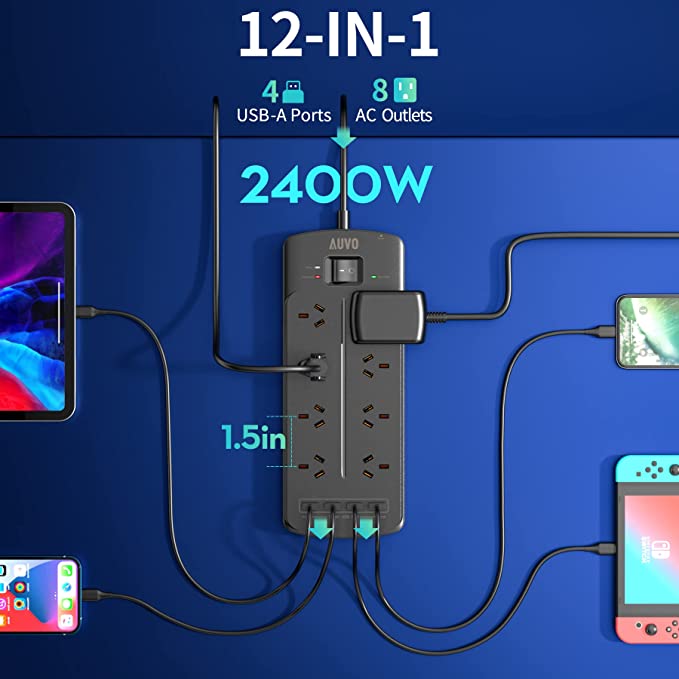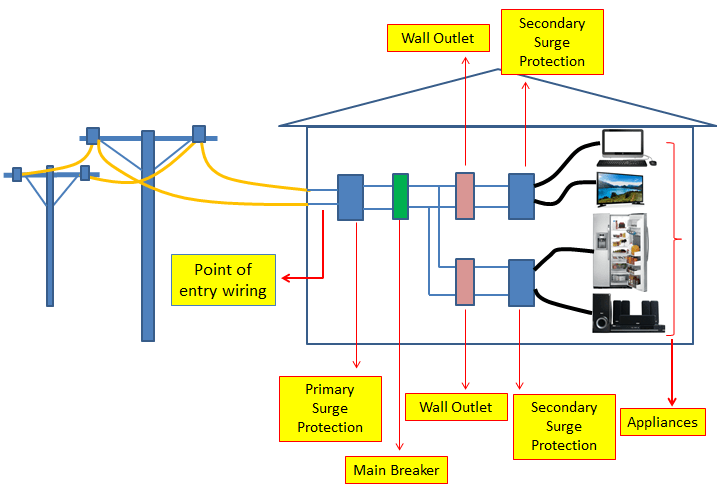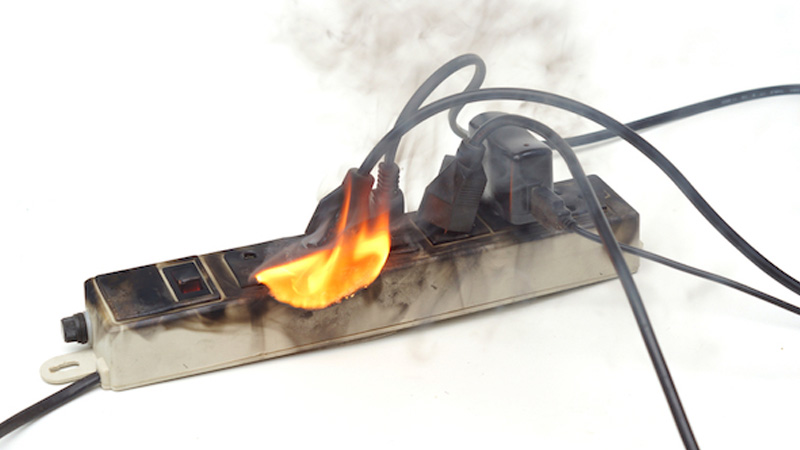What Is A Surge Protector, And How Do They Work?
Many modern homes and office buildings contain a lot of electronic appliances. These electrical appliances come with numerous safety concerns. Most homeowners look for ways to prevent their home appliances from being damaged. Power surges are a major enemy for electronic appliances, and surge protectors are devices created to counter electrical power surges.
A power surge is when there is a sudden increase in the electrical power level that enters a home. This sudden increase can cause immense damage to various electrical appliances. How can these power surges be countered effectively? This can be done by using a device called a surge protector.
Surge protectors protect electrical appliances from damage caused by abrupt spikes in electrical levels. Many things can cause power surges, and the damage inflicted on electronic devices can be quite devastating. For every home or office building containing electrical appliances, it is essential to have a surge protector built-in to prevent power surge damages. The more electrical appliances in the building, the more the surge protector is needed.
This brings the question of what exactly a surge protector does. A surge protector’s primary role is to limit the amount of electrical power that flows through a device. The surge protector switches the electrical connection or blocks any extra current flowing through devices once it reaches a certain threshold. This prevents the electronic device from receiving damage due to the high voltage level.
In every surge protector, there is an iron core transformer. This transformer is what transfers the AC passing through the protector. A surge protector also greatly reduces the overall voltage that passes through it to prevent too much power from entering the building’s electrical connection.
Sometimes the surge protector might get burnt to prevent high electrical voltage from passing through to electrical appliances hence, why it has the name protector. Surge protectors also prevent damage caused by power fluctuations. When the power supply isn’t stable, a surge protector deals with power spikes in the buildings’ circuit breakers.
The standard electrical voltage allowed to pass into household and office buildings is 120 volts. Once the voltage level surpasses that, it might lead to damage to electrical appliances in the building. A surge protector limits the power entering the building’s electrical connection to 120 volts and diverts all excess voltage into ground voltage or blocks it off entirely.

How Do Surge Protectors Work?
Surge protectors prevent power spikes and surges from significantly impacting electronic devices. Without a surge protector, if electronic devices are not destroyed completely, gradual damage is still being inflicted over time. Most surge protectors contain a metal oxide varistor (MOV). This MOV is what diverts all excess voltage that passes through the protector and prevents it from damaging electronics.
There are semiconductors contained in a metal oxide varistor. In situations where power is lower than a certain threshold, the semiconductors generate a very high resistance. Likewise, when the voltage level exceeds a certain threshold, the semiconductors produce a much lower resistance. If the power level entering the surge protector is correct, the semiconductors have zero reaction.
When excess electrical current flows into the surge protector, the MOV diverts any excess current into the ground. During this process, only the correct current level can flow through the surge protector. The electrical appliances can continue everyday work while the surge protector does all the protection duties.
Not all surge protectors make use of metal oxide varistors. Some of them use gas discharge arresters. These glass discharge arresters are tubes that basically do the same work as metal oxide varistors. They also prevent excess current from passing through the protector and switch them to the ground instead.
Gas discharge arresters are not commonly used in homes but rather in office buildings and industrial plants. The gasses present in gas discharge arresters are excellent conductors when charged. When the voltage levels passing through them become increasingly high, the gasses present are ionized. They pass all excess current into the ground until normal current levels are achieved again.
Some surge protectors come with backup fuses, which are resistors that can conduct current so far that it is under a certain threshold. When the current passing through the protector crosses the threshold, the fuse contained within burns, and the electrical circuit gets cut off. This is a sacrificial method that prevents electronic devices from being damaged in any way. Once the fuse is burnt, it is no longer effective and has to be replaced for the job of the surge protector to be done.

Conclusion
The work of a surge protector is to divert excess electrical current flowing into homes or office buildings. Thus, preventing high electric voltage from causing damage to electrical appliances. Different surge protectors have varying ways of functioning. Some possess metal oxide varistors or gas discharge arresters that divert current into the ground. At the same time, some contain fuses that get burnt and prevent current from flowing when the high electrical voltage passes through them.
Surge protectors are made to prevent electrical appliances from being damaged, so home and office owners are saved from spending more money on repairs and replacements. Different surge protectors have diverse working modes, but they all primarily prevent the passage of unusually high electrical currents.
References
- https://www.researchgate.net/publication/344141224_Electrical_Surge_Phenomenon_in_Power_Distribution_Network
- https://www.britannica.com/dictionary/surge-protector
Written by The Original PC Doctor on 2/7/2022.






















































































